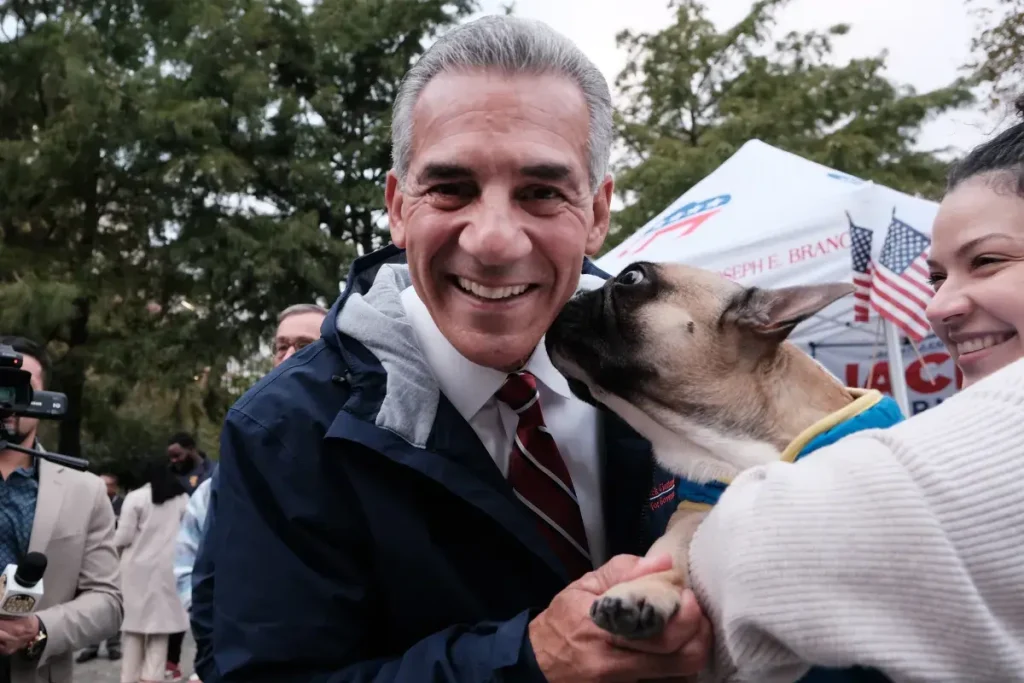Sherrill Leads in Final Stretch of New Jersey Governor’s Race
With just five days until Election Day, the New Jersey governor’s race has captured national attention as Democratic nominee Mikie Sherrill holds a 7-point lead over Republican Jack Ciattarelli, according to a new Fox News poll. The survey shows Sherrill commanding 52 percent of the vote compared to Ciattarelli’s 45 percent, representing a slight widening of her lead from earlier polling this month. This closely-watched contest carries significance beyond state borders, potentially signaling voter sentiment in the Northeast regarding former President Donald Trump and testing Republican momentum in traditionally Democratic territory. New Jersey hasn’t elected a Republican governor since Chris Christie’s 2013 reelection or backed a GOP presidential candidate since George H.W. Bush in 1988, making any potential shift in voter preferences particularly noteworthy.
The dynamics of the race are heavily influenced by attitudes toward Trump, with 64 percent of Sherrill supporters indicating their vote expresses opposition to the former president, while 35 percent of Ciattarelli supporters say their choice reflects support for Trump. This Trump factor has led Republican pollster Daron Shaw to observe, “It’s a cliché, but it’s true, this race is all about turnout,” noting that Sherrill’s supporters appear more motivated while the evidence for Ciattarelli’s base is “mixed.” The poll also reveals Sherrill’s favorability increasing slightly to 54 percent from 51 percent earlier in the month, while Ciattarelli’s favorability has dipped from 48 percent to 46 percent. These metrics suggest Sherrill has maintained a slight edge in public perception throughout the final weeks of the campaign, though the 3 percent margin of error in the poll of 956 likely voters means the race could still be tighter than numbers suggest.
Trump himself has waded into the race, posting on Truth Social to criticize Sherrill and urging voters to support Republican candidates, citing concerns about transgender rights, men competing in women’s sports, crime rates, and energy prices. His message promised that under Republican leadership, gasoline prices would drop to “approximately $2 a gallon,” contrasting this with what he characterized as Democrats’ “unrelentingly high crime, energy prices through the roof, men playing in women’s sports, and HEARTACHE!” This direct intervention by the former president underscores how national political figures and issues have permeated what would otherwise be a state-level contest, transforming the New Jersey race into something of a referendum on national politics and Trump’s continuing influence within the Republican Party.
Political experts view the race through the lens of broader national implications. Columbia University professor Robert Y. Shapiro explained that it’s not unusual for Trump to factor into voters’ decision-making in New Jersey, noting that “these off-year elections after a presidential election in particular are often at least somewhat a signal of dissatisfaction with the performance of the party in power in the White House.” The candidates themselves have embraced distinct messaging strategies in the final days, with Ciattarelli focusing on state-specific concerns like affordability, safety, and criticizing outgoing Democratic Governor Phil Murphy’s eight-year tenure. “After 8 years of Phil Murphy’s failures, New Jersey families are paying the price every single day,” Ciattarelli posted on X, citing “failed schools, handcuffed police officers, overdevelopment destroying our communities, higher taxes crushing working families.” He positions himself as the change candidate who will make New Jersey “affordable again” and “safe again.”
Sherrill, meanwhile, has sought to draw a sharp contrast between herself and her opponent, particularly regarding their relationship with Trump. In a pointed message on X, she stated simply: “The difference between me and Jack is clear as day. I’m going to serve YOU while he only cares to serve the president.” This straightforward framing attempts to connect Ciattarelli directly to Trump, leveraging the former president’s relative unpopularity in the state to her advantage. The different approaches highlight how candidates must navigate both local concerns and national political currents, particularly in a state where Democrats have maintained a significant advantage in recent years but where economic concerns and quality-of-life issues could potentially reshape traditional voting patterns.
As Election Day approaches on November 4, both campaigns are intensifying efforts to boost turnout among their respective bases while also attempting to sway undecided and independent voters. Early voting is already underway across New Jersey, adding urgency to these final campaign pushes. The outcome will not only determine who succeeds Democratic Governor Phil Murphy but may also provide valuable insights for both parties as they develop strategies for the 2026 congressional midterms. If Sherrill maintains her lead and secures victory, it would affirm Democrats’ continued strength in the Northeast and suggest limits to Trump’s influence in blue states. Conversely, a Ciattarelli upset would signal potential Republican inroads in traditionally Democratic territory and could reshape assumptions about the electoral landscape heading toward the next presidential cycle. Either way, New Jersey voters find themselves at the center of a contest with implications reaching far beyond state lines.


